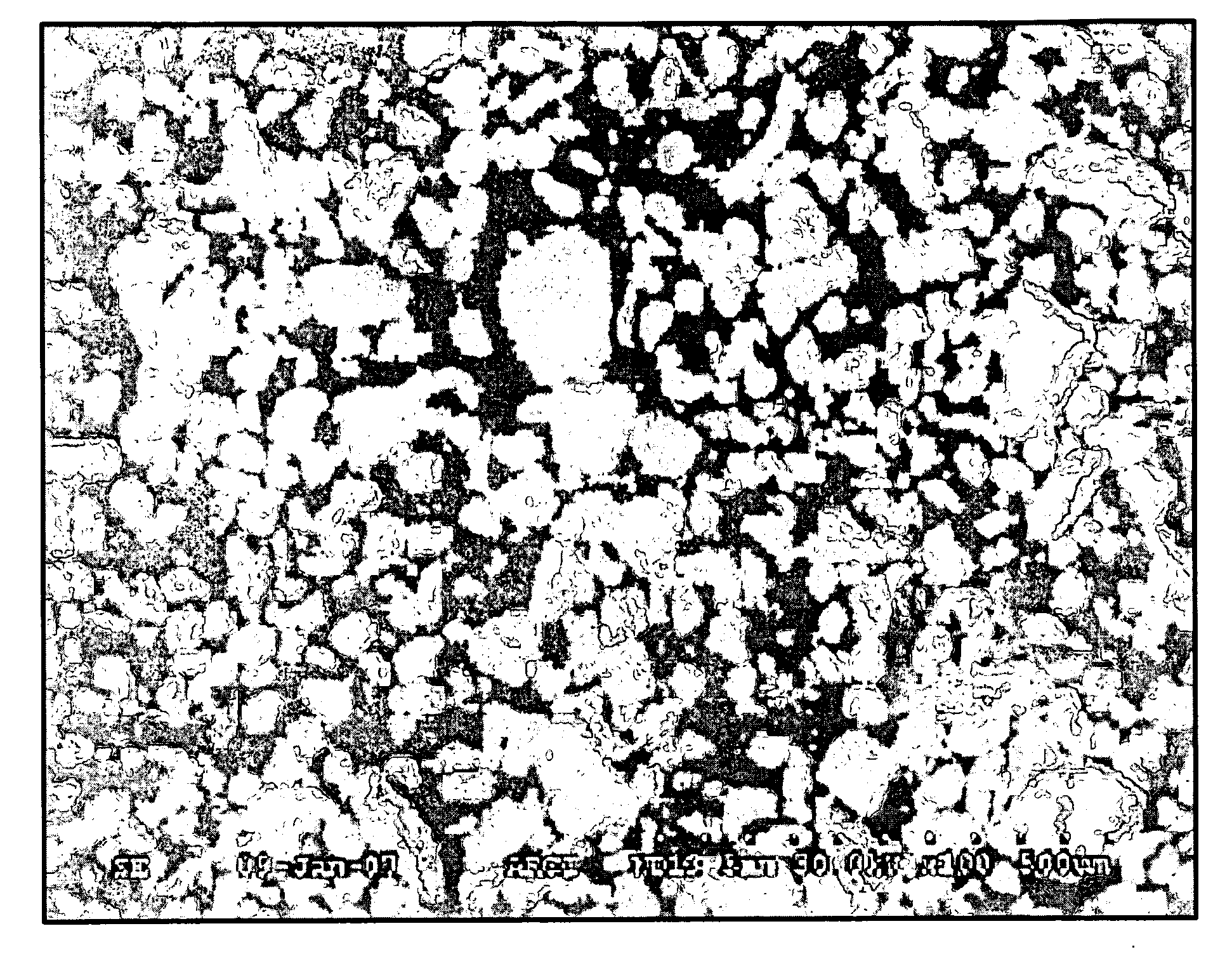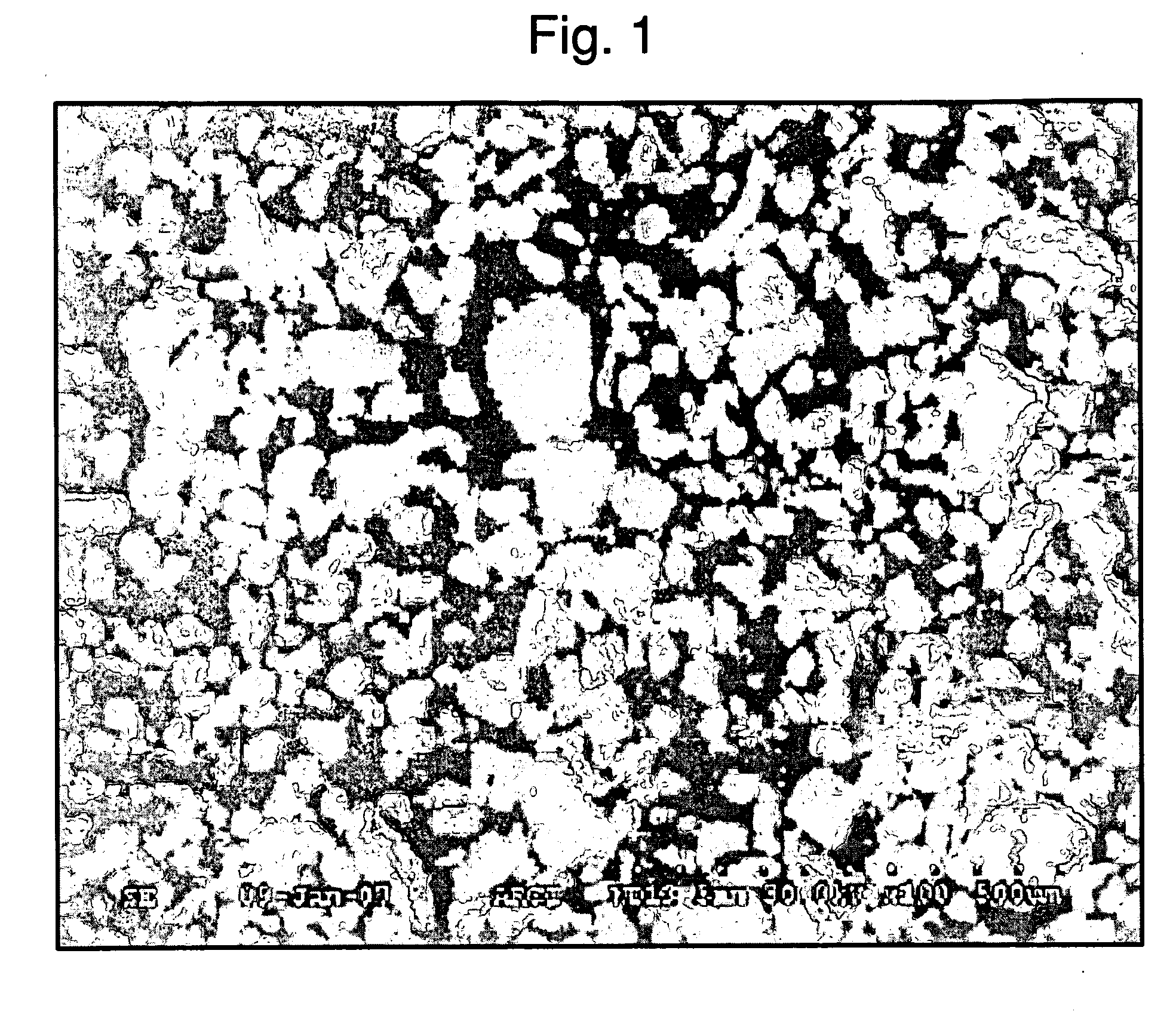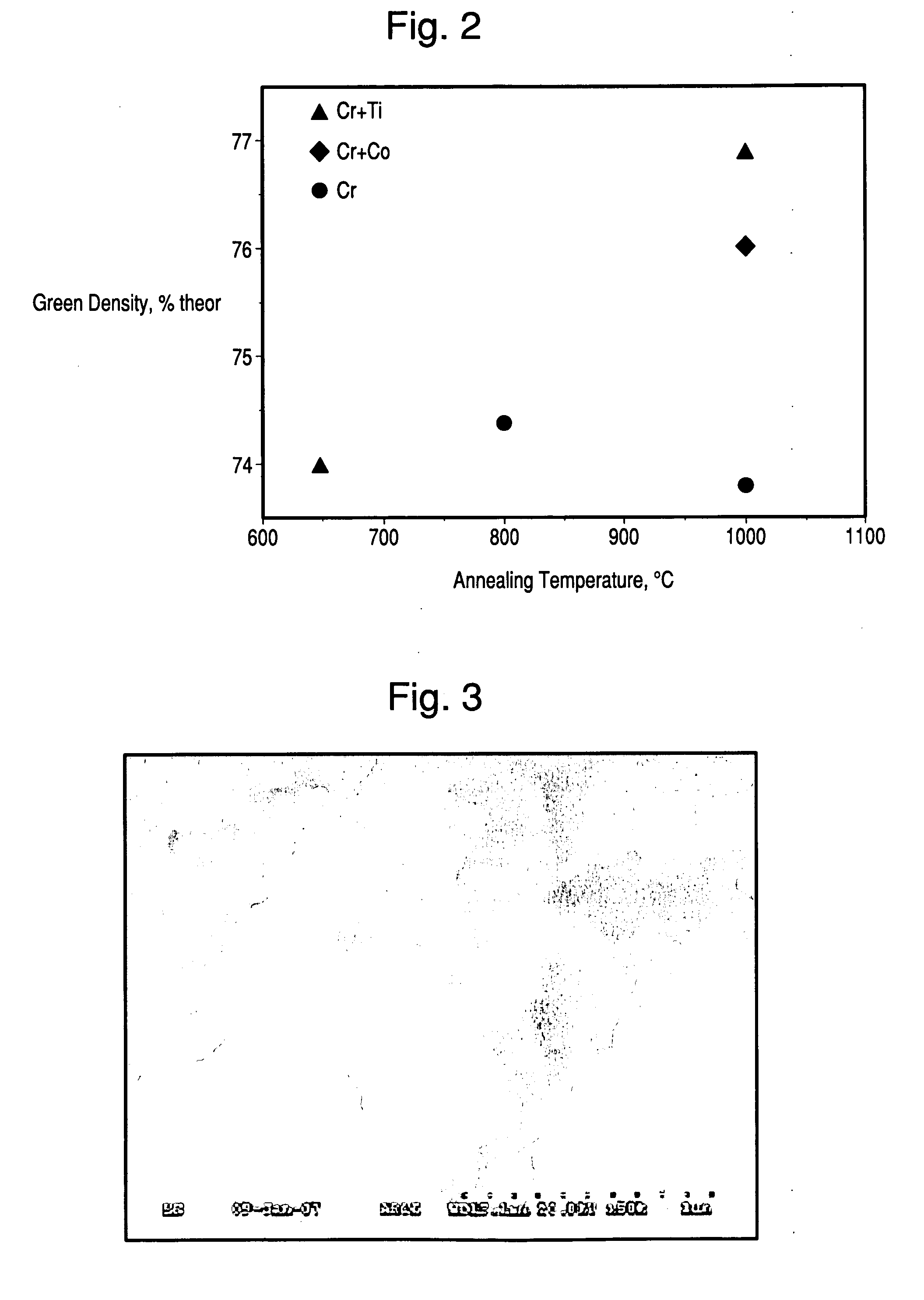Processing of powders of a refractory metal based alloy for high densification
a technology of refractory metal and high densification, applied in the field of chrome alloy, can solve the problems of prohibitive cost, insufficient reliability in the various aspects of their function, and the cost of functional interconnection in the production of cost effective sofc systems or stacks
- Summary
- Abstract
- Description
- Claims
- Application Information
AI Technical Summary
Benefits of technology
Problems solved by technology
Method used
Image
Examples
second embodiment
[0029]Thus, a powder metallurgy method of making a chromium base alloy of the second embodiment includes blending a first powder comprising a chromium powder and a second powder comprising at least one of titanium, titanium hydride, zirconium or zirconium hydride, annealing the first powder and the second powder in a reducing atmosphere after the step of mixing, compacting a blend of the first and the second powders, and sintering the compacted blend to form a chromium base alloy.
[0030]The annealing step may be conducted before and / or after the step of compacting. Preferably, the powder blend is annealed in hydrogen and then compacted. Alternatively, the powder blend may be compacted and then annealed in hydrogen, or the blend may be annealed in hydrogen before and after compacting.
[0031]The annealing may be conducted in a temperature range of about 800 to about 1200° C., such as about 1000° C. However, other suitable temperatures may be used. Any suitable hydrogen atmosphere may be...
first embodiment
[0032]Preferably, the first powder is a chromium powder having a bimodal distribution comprising a blend of coarse and fine chromium powders, such as for examples powders D and W described in the However, a single mode distribution chromium powder may also be used.
[0033]The step of compacting preferably comprises cold compacting at least the first powder and the second powder. However, other compacting methods may also be used. If desired, a second hydrogen annealing step (which can be referred to as a presintering step) at a temperature of about 800 to about 1200° C., such as about 1000° C., may be conducted after the step of compacting. An optional calibration or sizing step, such as a pressing step, may be added before and / or after the sintering step. The step of sintering is also preferably conducted in an atmosphere containing hydrogen at a temperature of about 1300 to about 1500° C. However, other sintering temperatures may also be used.
[0034]While titanium and titanium hydri...
fourth embodiment
[0045]It was possible to further enhance the compact density by suitable selection and addition of the lubricant. In the fourth embodiment, the powder blends of the alloy made according to the prior embodiments incorporated either one of the two commercially available lubricants employed widely in powder compaction. The selection of either one of the lubricants, Acrawax C or Kenolube, as shown in FIG. 7, enables the attainment of the projected green density by addition of as low a proportion of the lubricant as 0.25%. In conventional compaction, lubricant additions of about 0.5 to 0.75% are common. In FIG. 7, the first bar shows the density of the compact of Kenolube with CrTi powder, the second bar shows the density of the compact of Kenolube with CrTiH2 powder and the third bar shows the density of the compact of Acrawax C with CrTiH2 powder. The benefits of reducing the amount of lubricant include ease of removal of the lubricant prior to sintering, and the densification of the v...
PUM
| Property | Measurement | Unit |
|---|---|---|
| temperature | aaaaa | aaaaa |
| weight percent | aaaaa | aaaaa |
| particle diameter | aaaaa | aaaaa |
Abstract
Description
Claims
Application Information
 Login to View More
Login to View More - R&D
- Intellectual Property
- Life Sciences
- Materials
- Tech Scout
- Unparalleled Data Quality
- Higher Quality Content
- 60% Fewer Hallucinations
Browse by: Latest US Patents, China's latest patents, Technical Efficacy Thesaurus, Application Domain, Technology Topic, Popular Technical Reports.
© 2025 PatSnap. All rights reserved.Legal|Privacy policy|Modern Slavery Act Transparency Statement|Sitemap|About US| Contact US: help@patsnap.com



